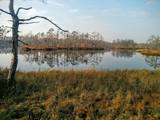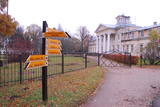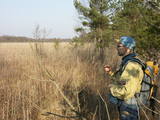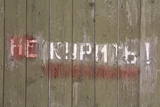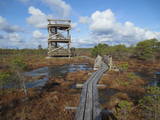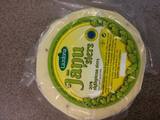| Nr | Nosaukums | Apraksts |
|---|---|---|
|
Kafejnīca - konditoreja "Ieviņa" atrodas Kandavas centrā netālu no Tirgus laukuma. Piedāvājumā cepumi, kūciņas, tortes, sklandrauši, pīrādziņi u.c. |
||
|
Pavāru māja atrodas bijušajā Līgatnes Dzemdību namā "Wilhelma". Tā ir iecerēta kā vieta, kur pavāriem, kā arī citiem interesentiem darīt, radīt un eksperimentēt. Idejas autors ir šefpavārs Ēriks Dreibants. Šīs vietas mērķis ir iedrošināt izzināt un atklāt mūsu reģionam raksturīgas unikālas garšas un pieredzi. Pavāru māja atbalsta slow food filozofiju un apkārtnes zemniekus un ražotājus. Līdzās mājai atrodas Dabas vērotāju dārzs, kurā atrodams gan rotaļu laukums "Ligzda kokā", gan palielināmais stikls dabas elementu tuvākai aplūkošanai, gan piknika zona ar ugunskura vietu. Dārzā ierīkots garšaugu dārzs, sastādīti augļkoki un ogu krūmi, bet tā centrā līdzās Putnu vērošanas laukumam izveidota Tauriņu pļava.
|
||
|
Cenas tīreļa purva taka izveidota, lai apmeklētājus iepazīstināu ar vienu no skaistākajām Latvijas dabas dzīvotnēm - sūnu jeb augsto purvu. Laipa vijas gan gar skaistiem purva ezeriem, tajā mītošajiem augiem un dzīvniekiem, gan pa purva degradēto daļu. Laipas sākumā un vidū ir pa vienam skatu tornim. |
||
|
Informatīvi bagāta un interesanta dabas izziņas taka, kas ved pa Gaujas tuvumā esošajiem krasta biotopiem – boreāliem mežiem, nogāžu mežiem, gar vecupi, jauktiem lapu koku un platlapju mežiem, kā arī parkveida ozolu pļavām. Ziemeļgaujas aizsargājamo ainavu apvidū esošie meži ir vieni no sugām daudzveidīgākajiem Latvijā. Taka ir marķēta, izveidotas skatu platformas, izvietoti informatīvie stendi. Kopējais takas garums: 2,2 km |
||
|
Atrodas Vecpiebalgas dienvidaustrumdaļā aiz baznīcas. 1340. - 1365. g. Rīgas arhibīskaps šeit uzcēla pili - cietoksni, ko apjoza aizsarggrāvji (atliekas redzamas arī mūsdienās). Pils ziemeļu pusē atradās priekštilta nocietinājumi, bet austrumdaļā - pils galvenā ieeja un tornis. Pili postīja 1577. g., bet pilnībā sagrāva 18. gs. |
||
|
Krimuldas luterāņu baznīcu uzskata par vienu no vecākajiem Latvijas dievnamiem. Tā sākotnēji celta 13. gs. sākumā drīz pēc Kubeseles iekarošanas un vēlāk daudzkārt pārbūvēta. Blakus baznīcai izveidots meditācijas labirints "Lilijas zieds". Kad 1217. g. pie Vīlandes kaujā krita lībiešu virsaitis Kaupo, tā pelnus pēc nostāstiem esot apbedījuši baznīcā. Par Kaupo kapa vietu tautā dēvē nelielu pauguru pie blakus esošās Runtiņupītes (Runtiņš), kuras labajā krastā atrodas ~ 7 m gara mākslīgi raktā Kubeseles jeb Runtiņala. Runtiņupītes kreisajā krastā slejas Kubeseles pilskalns. Pie baznīcas sākas Kubeseles dabas taka. Pa to var aiziet līdz Gaujai, kuras krastā iegūlis Lielais (Runtiņa) akmens. Turpat apskatāmi Gaujas plostnieku uzstādītie enkurkluči. Krimuldas viduslaiku pili (4 km austrumos no Krimuldas baznīcas) cēla 13. gs. otrajā pusē vietā, kur Gaujas senlejas labo pamatkrastu pāršķeļ dziļā Vikmestes grava. Pils (saimniekoja Rīgas domkapituls – Rīgas arhibīskapu padome) bija iespaidīga celtne, kuras plašo iekšpagalmu ietvēra 1,5 m biezs aizsargmūris. 1601. g. atkāpjoties, Krimuldas pili uzspridzināja zviedru karavadonis Heinrihs Līvens. Tagad ar mežu apaugušajā pilskalnā apskatāmas nelielas pilsdrupas. Pie tām atrodas Gaisa trosu ceļš un sākas Krimuldas Serpentīna ceļš. Netālu esošā Krimuldas muiža pirmoreiz rakstos ir minēta jau 15. gs. Tagad redzamo muižas pili būvēja 19. gs. neoklasicisma stilā (īpašnieks - firsts Līvens). 20. gs. 20 gados pēc pils atsavināšanas tā nonāca Latvijas Sarkanā Krusta īpašumā, kas izveidoja bērnu sanatoriju. Mūsdienās pilī atrodas rehabilitācijas slimnīca "Krimulda", bet no saimniecības ēkām ir saglabājušies muižas staļļi, kūts, kalpu, pārvaldnieka un t.s. Šveices māja, kā arī parks. Te piedāvā tematiskas ekskursijas. Ja pa Gauju brauksim ar laivu, tad tuvumā varēs aplūkot ap 15 m augstās Velnalas klintis. Tās var labi redzēt arī no pretējā - kreisā Gaujas krasta (izveidota atpūtas vieta). Klinšu vidusdaļā atrodas ap 19 m dziļā un 4,7 m augstā Krimuldas Velnala. Ja no Velnalas klintīm pa Gaujas labā pamatkrasta lejasdaļu dosimies Turaidas virzienā, skatam pavērsies ar smilšakmens atsegumiem bagātā Piķenes krauja. Tās piekājē ir izveidota ~ 1 km garā Piķenes bebra taka. Takas malā atrodas Mazā Velna ala (5 m gara) ar iztekošo Gudrības avotiņu, gan arī tikpat garā Aunapieres ala. Redzamas arī nelielas vecupes. |
||
|
"Lejas" atrodas Senā Baltijas ledus ezera krastos, kur iespējama atbalss klausīšanās un saulrieta vērošana. Neparastā saimniecībā, kurā vēl nesen nebija elektrības (izmantoja sveču lākturus un petrolejas lampas) visu dara ar roku darbu un piedāvā vērot kazas slaukšanu, piena atkrejošanu un siera gatavošanu, piedalīties zirga iejūgšanā, seno rodeļu izmēģināšanu, kā arī darbošanos ar izkapti un sirpi. Apskatāmi Latvijas laukos audzējamie mājdzīvnieki.
Lauku sētā tiek organizētas vasaras skolas jauniešiem un bērniem.
|
||
|
„Joži” meklējami Jaunpilī, Jaunpils – Viesatas ceļa malā. „Joži” ir viena no lielākajām Latvijas graudkopības (ziemāji, vasarāji un arī rapši) saimniecībām, kas sākusi veidoties pagājušā gadsimta astoņdesmito – deviņdesmito gadu mijā. Šobrīd saimniecībā slejas 14 graudu torņi, tiek rekonstruēta graudu kalte. Kopumā tiek apsaimniekoti ap 5000 ha zemes, izveidots moderns lauksaimniecības tehnikas parks. Saimnieki Gunvaldis un Guna Sproģi aktīvi iesaistās dažādu ES projektu īstenošanā. Dažādu konkursu (t.sk. „Sējējs”) uzvarētāji un laureāti. |
||
|
Kaļķainais zāļu purvs izveidojies periodiski aplūstošā starpkāpu ieplakā, kas ir nozīmīga daudzu aizsargājamu augu sugu dzīvotne. Zāļu purvs ir dažviet pārskatāms no mežainajām kāpām, kas purvam pieguļ no dienvidaustrumu puses. |
||
|
Zemnieku saimniecība „Lejas Kleperi” atrodas Smiltenes novadā. Saimniecības zemes kopplatība ir 119,4ha t.sk. meži 86,1ha. Saimniecības pamatnodarbošanās saistīta ar meža apsaimniekošanu. Kopš 1992. gada vienā no dzīvojamām ēkām uzsākta zemkopības un mežkopības instrumentu privāta muzeja veidošana. Muzeja eksponātu klāsts tiek nemitīgi papildināts. |
||
|
Plaša teritorija dienvidos no Pāvilostas, kur izvietotas kādreizējās padomju armijas apvienotās noliktavas un naftas bāze. Pašlaik teritorija tiek izmantota celtniecības materiālu ieguvei un kā kokapstrādes darbnīcas. Pie teritorijas izvietotas brīdinājuma zīmes "Bīstami, apdraud dzīvību", kas jārespektē!
|
||
|
Saimnieces radošums izpaužas dažādu lauku labumu gatavošanas jomā – sieru siešanā, siera standziņu cepšanā u.c. Bioloģiski sertificēta saimniecība, kurā izmanto pašu ražotos produktus. Piedāvā degustācijas un produkcijas iegādi, kā arī ekskursijas grupām no 10 cilvēkiem. |
||
|
Bijušajā Mīslera muižas parkā ir izveidots savdabīgs tematiskais ciemats, kur visas atrakcijas ir saistītas ar leģendām par vientiešiem, kas bija pazīstamas Vācijā jau pirms 400 gadiem.Vientieši ir jokdaru tēli, kas kļuva slaveni ar savu nepraktisko, bezjēdzīgo rīcību un anekdotiskajām izdarībām.Šeit Jūs varēsiet piedalīties vientiešu anekdotiskajos piedzīvojumu pārgājienos, darboties meistaru darbnīcās, nopirkt kādu vietējo suvenīru, ieturēt maltīti (grupām pēc iepriekšējā pasūtījuma) un pārnakšņot teltīs. |
||
|
Kafejnīca atrodas Engurē, un tās specilizācija ir dažādi zivju ēdieni. Degustācijās piedāvā ne mazāk kā septiņu veidu zivju ēdienus – karbonādes, salātus, kanapē, kotletes, marinādes, pīrādziņus u.c. |
||
|
Atrodas 3,7 km garās laipu takas vidusdaļā. No torņa paveras viena no Latvijas izcilākajām augstā purva ezeriņu un lāmu kompleksa ainava. Tornis ir populāra saullēktu un ziemeļblāzmas fotografēšanas vieta. |
||
|
Buses (Matkules) pilskalns atrodas Imulas veidotā krastu ielokā. No pilskalna, gan pretējā Imulas krasta atklājas vieni no skaistākajiem Kurzemes mazo upju skatiem. Tos gan vislabāk vērot bezlapu periodā, kad ainavas neaizsedz krasta augājs. Apkaimē izveidotas takas kājāmgājējiem. |
||
|
Saimniecībā audzē zīdītājgovis (Galovejas, Herefordi, Limuzīna, Šarolē, Latvijas brūnās). Piedāvā izzinošu ekskursiju, kuras laikā var vērot – kā barojas teliņi. |
||
|
Piedāvājumā relaksācija pirtī - sildīšanās, skrubēšanās, enerģiskais pēriens, kā arī dažādas masāžas. |
||
|
Uzņēmumā ražo pienu, krējumu, biezpienu un biezpiena izstrādājumus, jogurtus, desertus. Produkcija tiek pagatavota no augstas kvalitātes izejvielām – piena, ko iepērk no vairāk nekā 100 zemnieku saimniecībām un 3 kooperatīvām sabiedrībām. Ražošanas gaitā tiek ievēroti un uzlaboti visi tehnoloģiskie procesi, lai produkts saglabātu savu vērtību un uzlabotos tā garša un uzturvērtība. Uzņem ekskursijas un organizē degustācijas. Viens no pieciem Latvijas uzņēmumiem, kas drīkst ražot ES garantēto tradicionālo īpatnību produktu - „Jāņu sieru”. Produktiem ir kvalitātes zīme „Zaļā karotīte”. |
||
|
Mätiku saimniecība un pienotava nodarbojas ar piena ražošanu un pārstrādi, kā arī dējējvistu un aitu audzēšanu. Nelielajā pienotavā no pašu govju piena ražo visdažādākos piena produktus. Iepriekš piesakoties, var apciemot saimniecību, iepazīties ar tās darbu un nogaršot produkciju. |
||


